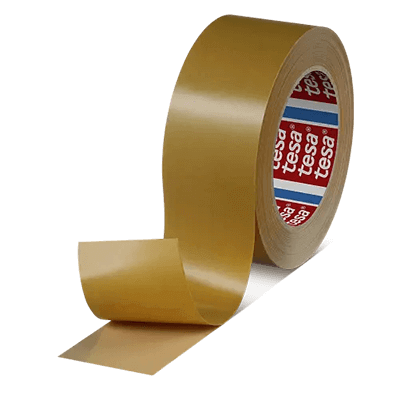What Is Adhesive Film?

Adhesive film is a resin-based adhesive. It’s used for bonding materials such as plastics. Depending on the type of adhesive resin used, it can be categorized as adhesive, thermosetting, or thermoplastic.
A key characteristic of adhesive film is its ability to evenly distribute adhesive, ensuring consistent strength and quality in bonds. This uniformity minimizes variations in adhesive strength, uneven application, and overflow, crucial for precision work and delicate materials.
Additionally, some adhesive film types are versatile enough to bond different materials like plastics and metals. They also contribute to odor reduction in work environments. However, for effective bonding, it’s assumed that the adhesive surfaces are clean and free of oil and dirt. Improper surface treatment might lead to ineffective adhesion.
Applications of Adhesive Film
Adhesive film has a broad range of applications in various industries, housing equipment, and medical care, being a next-generation bonding technology. Below are some of its common uses:
1. Electronic Devices
In electronic devices such as smartphones and tablets, adhesive film is used to fix the display panel to the body. This ensures accurate positioning, shock, and vibration resistance. It also secures batteries to prevent movement or vibration.
2. Automobiles
Adhesive film is employed to bond interior panels and components in automobiles. Its versatility is particularly useful for joining different materials like metals and plastics, ensuring efficient and strong bonding.
3. Construction Sites
Used in metal and composite roofing, adhesive film secures fastening to substrates. In window and door installations, it acts as a sealant, enhancing airtightness and waterproofing. It offers more consistent application than liquid adhesives, reducing workmanship variability.
Principle of Adhesive Film
Adhesive film operates by uniformly applying adhesive onto a film-like carrier material for bonding. Adhesion involves joining two surfaces via a third medium through anchor effects, chemical bonding, and physical bonding.
The anchor effect is where the adhesive penetrates surface irregularities, physically anchoring itself. This results in a firmer grip and stronger bond, especially with high viscosity adhesive films.
Chemical adhesion occurs when adhesive molecules react with surface molecules to form chemical bonds. Surface treatments often enhance this effect.
Physical adhesion is the molecular attraction between the adhesive film and the surface molecules. Dispersion forces play a crucial role in bonding different materials.
Types of Adhesive Film
Adhesive film comes in various types, each suited for different mechanisms and applications.
1. Heat-Welding Film
This type contains a thermoplastic adhesive that melts at high temperatures. It’s used for bonding dissimilar materials like metal and resin, characterized by low solvent residue and gas emissions.
2. Thermosetting Film
Thermosetting adhesive film cures at high temperatures. Applied to a material’s surface and cured, it solidifies to create a strong bond.
3. Pressure-Sensitive Adhesive Film
This room-temperature tacky film adheres through applied pressure. It’s adjustable, peelable, heat-resistant, and chemical-resistant, making it suitable for electronic components.